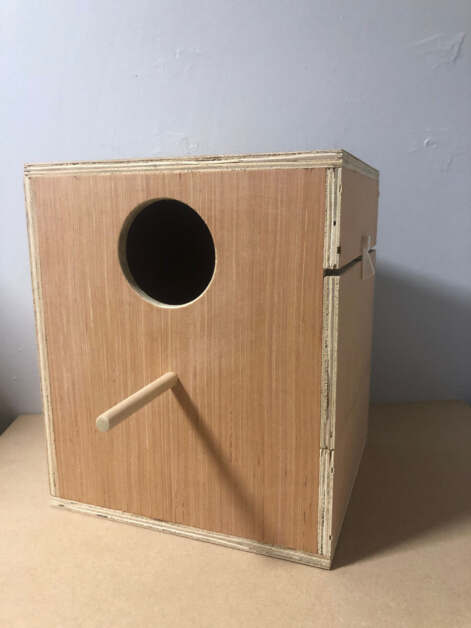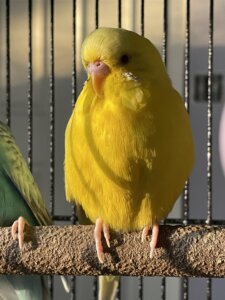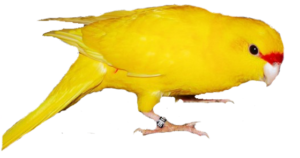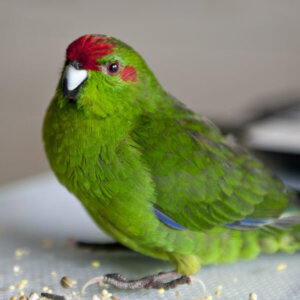How Many Times A Year Do Kakarikis Breed: Breeding Insights
Kakarikis, also known as New Zealand parakeets, are fascinating birds. They are known for their vibrant colors and active behavior.
But how many times a year do kakarikis breed? Kakarikis typically breed several times a year, usually between two to four times, depending on their environment and care. Kakarikis are unique among parrots for their frequent breeding cycles. Unlike many other birds that breed once or twice a year, kakarikis can breed multiple times.
This frequent breeding is influenced by factors such as diet, habitat, and overall health. Understanding the breeding habits of kakarikis is crucial for anyone interested in keeping them as pets or studying their behavior. In this blog, we will explore the details of their breeding cycles, what influences them, and how to care for them during this period. Stay tuned to learn more about these colorful and lively birds.
Introduction To Kakarikis
Kakarikis, also known as New Zealand parakeets, are fascinating birds. They are known for their vibrant colors and active nature. Understanding their breeding habits requires an introduction to their origin and habitat, as well as their physical characteristics.
Origin And Habitat
Kakarikis originate from New Zealand. They inhabit forests, scrublands, and coastal areas. These birds thrive in both lowland and alpine regions. They adapt well to various environments, making them resilient.
Physical Characteristics
Kakarikis are small to medium-sized parrots. They have bright green feathers with distinctive red or yellow patches. Their eyes are dark, and their beaks are strong and curved.
Their wings are short but powerful. This allows them to fly swiftly. They have zygodactyl feet, meaning two toes face forward and two backward. This helps them grasp branches and climb easily.
| Feature | Description |
|---|---|
| Size | Small to medium |
| Color | Bright green with red or yellow patches |
| Eyes | Dark |
| Beak | Strong and curved |
| Wings | Short and powerful |
| Feet | Zygodactyl (two toes forward, two backward) |
Breeding Season
Kakarikis are fascinating birds known for their bright colors and energetic personalities. One of the most interesting aspects of their life cycle is their breeding season. Understanding the breeding season helps in providing the best care and environment for these birds.
Typical Breeding Months
Kakarikis usually breed during the warmer months. In the Northern Hemisphere, the breeding season typically starts in March and lasts until August. In the Southern Hemisphere, these months shift to September through February.
During these months, Kakarikis become more active and display mating behaviors. They build nests and prepare for their chicks. Providing suitable nesting boxes during these months encourages successful breeding.
Influence Of Climate
Climate plays a significant role in the breeding season of Kakarikis. In regions with milder climates, Kakarikis may breed multiple times a year. In colder climates, breeding may be limited to the warmer months.
A stable, warm environment promotes more frequent breeding. Temperature, humidity, and light exposure are key factors. Ensuring these conditions can lead to healthier, more active birds and successful breeding.
Below is a table summarizing the breeding months in different hemispheres:
| Hemisphere | Breeding Months |
|---|---|
| Northern Hemisphere | March – August |
| Southern Hemisphere | September – February |
In summary, the breeding season of Kakarikis is influenced by their environment. Understanding these factors can help in providing the best care for these vibrant birds.
Frequency Of Breeding
The frequency of breeding in Kakarikis is a crucial aspect for bird enthusiasts. Understanding this can help in providing better care and ensuring the health of these beautiful birds. Let’s dive into the details.
Number Of Clutches Per Year
Kakarikis typically breed multiple times a year. On average, they can produce 3 to 4 clutches annually. Each clutch usually contains 5 to 8 eggs. This high breeding rate makes them prolific breeders among pet birds.
Factors Affecting Frequency
Several factors can influence how often Kakarikis breed. These include:
- Age of the birds: Younger birds may breed more frequently than older ones.
- Nutrition: A diet rich in vitamins and minerals supports frequent breeding.
- Environment: A stress-free environment with proper nesting conditions is essential.
- Health: Healthy birds tend to breed more regularly.
| Factor | Impact on Breeding |
|---|---|
| Age | Young birds breed more |
| Nutrition | Proper diet supports breeding |
| Environment | Stress-free conditions are essential |
| Health | Healthy birds breed regularly |
By understanding these factors, you can better manage the breeding cycle of Kakarikis. Ensure they have the right conditions to thrive and reproduce healthily.

Credit: www.reddit.com
Nesting Behavior
Kakarikis, also known as New Zealand parakeets, exhibit unique nesting behaviors. Understanding these behaviors can help in providing the best care for these vibrant birds. Here, we will explore their preferred nesting sites and the materials they use for building nests.
Preferred Nesting Sites
Kakarikis prefer to nest in secure, enclosed spaces. In the wild, they choose tree cavities or rock crevices. These sites offer protection from predators and harsh weather. In captivity, they favor nesting boxes. These boxes should be placed in a quiet area to reduce stress.
Ideal dimensions for nesting boxes are:
- Height: 12-14 inches
- Width: 8-10 inches
- Depth: 8-10 inches
The entrance hole should be around 2.5 inches in diameter. This allows easy access while keeping larger predators out.
Nesting Material
Kakarikis use various materials to build their nests. Natural materials include:
- Grass
- Leaves
- Moss
- Feathers
In captivity, they also use shredded paper and coconut fibers. Providing a mix of these materials ensures a comfortable and secure nest. Place the materials in the nesting box for easy access.
Here is a table summarizing the preferred nesting materials:
| Material | Source |
|---|---|
| Grass | Natural |
| Leaves | Natural |
| Moss | Natural |
| Feathers | Natural |
| Shredded Paper | Artificial |
| Coconut Fibers | Artificial |
Ensuring a mix of these materials helps mimic their natural environment. This promotes healthy nesting behavior and well-being.
Mating Rituals
The mating rituals of Kakarikis are fascinating. These small parrots have distinct behaviors during the breeding season. Understanding their rituals can help breeders support healthy reproduction.
Courtship Behavior
During courtship, male Kakarikis display vibrant plumage. They also perform elaborate dances. These dances include hopping and wing-flapping. The male may also sing to attract the female. This behavior shows the male’s health and vitality.
Pair Bonding
Once a female accepts a male, pair bonding begins. They spend time preening each other. This strengthens their bond. They share food and stay close together. This closeness is essential for successful breeding.
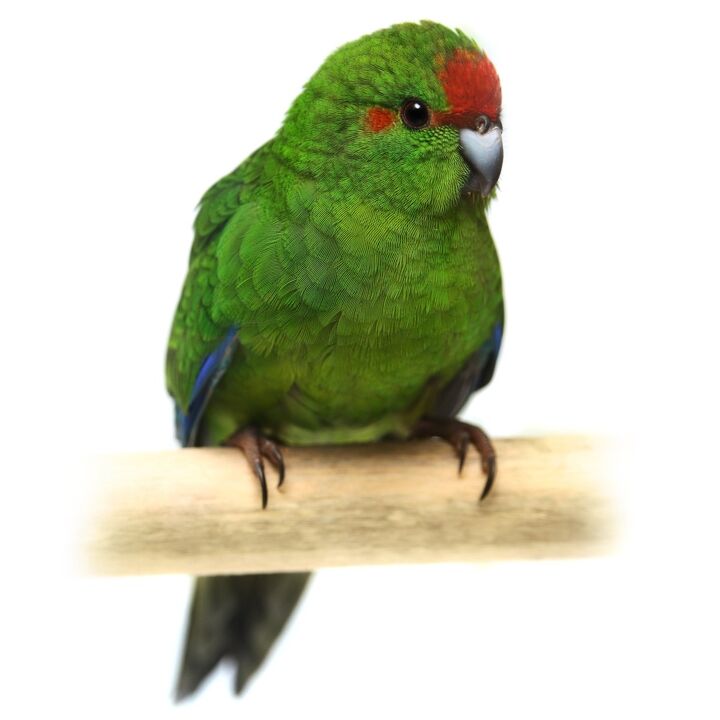
Credit: www.petguide.com
Egg Laying And Incubation
Kakarikis are small parrots known for their vibrant colors and playful nature. Understanding their breeding habits, especially their egg laying and incubation process, is essential for breeders. This section covers the number of eggs per clutch and the incubation period, providing essential insights.
Number Of Eggs Per Clutch
Kakarikis typically lay between 5 to 9 eggs per clutch. The number can vary based on factors like the age and health of the female. Breeding conditions also play a significant role. A well-cared-for Kakariki tends to lay more eggs.
| Clutch Size | Number of Eggs |
|---|---|
| Small | 5 |
| Average | 7 |
| Large | 9 |
Incubation Period
The incubation period for Kakariki eggs lasts around 19 to 21 days. During this time, the female Kakariki stays close to the eggs, ensuring they remain warm. The male supports by feeding the female and keeping the nest safe.
- Eggs hatch after about three weeks.
- Temperature is crucial for successful hatching.
- Humidity levels should be monitored closely.
Proper care during the incubation period ensures healthy chicks. Breeders should maintain a calm environment to avoid stressing the birds. Regular checks can help spot any issues early, ensuring a higher success rate.
Chick Rearing
Kakarikis typically breed two to three times a year. These small parrots are known for their vibrant colors. They thrive with proper care and attention during the breeding season.
Kakarikis are devoted parents. They put in a lot of effort to raise their chicks. Understanding the chick rearing process is important for any breeder.Parental Care
Both parents share the duties. The mother stays in the nest. She keeps the chicks warm. The father brings food. He feeds both the mother and the chicks. This teamwork ensures healthy growth.Fledging Process
Chicks start to fledge at about five weeks. They leave the nest and start to fly. This is a crucial time. Parents continue to feed them. They also teach them vital skills. By seven weeks, chicks become more independent. They start to eat on their own. Understanding these stages helps breeders. It ensures the well-being of the chicks. “`
Credit: www.petguide.com
Breeding Challenges
Breeding Kakarikis can be a rewarding experience. Yet, it comes with its own set of challenges. Understanding these challenges helps in ensuring a successful breeding season. Let’s explore some common issues and health concerns associated with breeding Kakarikis.
Common Issues
One common issue is finding compatible pairs. Kakarikis can be picky with their mates. Another problem is the environment. They need a quiet, stress-free place to breed. Noise and disturbances can hinder their breeding process.
Nesting materials are crucial. Inadequate nesting materials can cause breeding failure. Also, temperature and lighting play significant roles. Improper temperature or insufficient light can affect their breeding cycle.
Health Concerns
Kakarikis are prone to certain health issues. Breeding females need extra calcium. A lack of calcium can lead to egg binding. Egg binding is a serious condition where the female cannot lay eggs.
Additionally, poor diet affects breeding success. A balanced diet is essential for healthy chicks. Regular vet check-ups are necessary. They help catch any health issues early.
Stress is another health concern. Stress weakens their immune system. It can lead to various diseases. Providing a calm environment reduces stress. It ensures a healthier breeding process.
Tips For Breeders
For breeders of Kakarikis, achieving successful breeding cycles requires careful planning and attention to detail. By following specific tips, you can create an environment that supports their breeding habits and ensures the health of both adult birds and their chicks. Below, we will discuss essential tips for breeders under key subheadings.
Optimal Conditions
Kakarikis thrive in environments that mimic their natural habitat. Ensure the aviary is spacious. Provide plenty of perches and nesting boxes. Maintain a consistent temperature around 70-75 degrees Fahrenheit. Keep humidity levels moderate. Ensure good ventilation. Minimize noise and disturbances. A stress-free environment encourages breeding.
Diet And Nutrition
A balanced diet is crucial for breeding success. Offer a variety of seeds, fresh fruits, and vegetables. Include leafy greens like spinach and kale. Provide protein sources such as boiled eggs and mealworms. Ensure a constant supply of clean water. Supplement with vitamins and minerals. A healthy diet boosts fertility and chick development.
Frequently Asked Questions
How Often Do Kakarikis Breed Annually?
Kakarikis typically breed two to three times a year. Their breeding frequency can depend on environmental conditions and care.
What Is The Kakariki Breeding Season?
Kakarikis don’t have a strict breeding season. They can breed year-round if conditions are favorable.
How Many Eggs Do Kakarikis Lay?
Kakarikis generally lay between five and eight eggs per clutch. Egg-laying usually occurs every second day.
What Is The Incubation Period For Kakariki Eggs?
The incubation period for Kakariki eggs is around 19 to 21 days. Both parents may take turns incubating.
Conclusion
Kakarikis are known for their frequent breeding cycles. They can breed up to four times a year. This depends on their environment and care. Proper diet and suitable nesting conditions help. Watch for signs of stress or overbreeding. Healthy and happy kakarikis breed more successfully.
Always consult a vet for advice. Caring for kakarikis requires attention and knowledge. Enjoy the vibrant energy these birds bring. Happy birdkeeping!
Hello Dear, I'm Poli Kolymnia, owner of many birds (including budgies).
With a deep passion for these feathered companions, I'm here to share my expertise and extensive knowledge on birds care.
My articles cover essential topics like diet, housing, care, and health, providing practical tips to help you create a happy and thriving environment for your birds.

